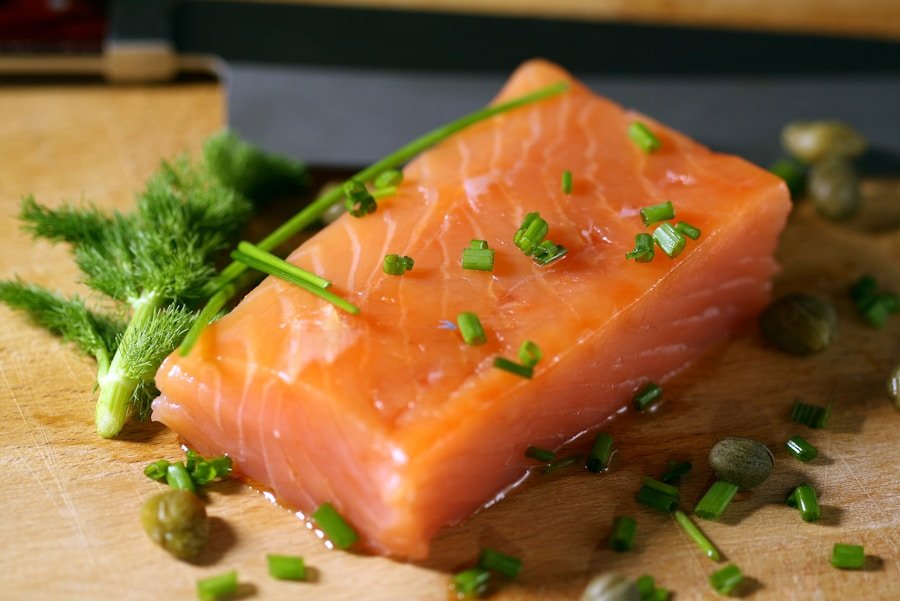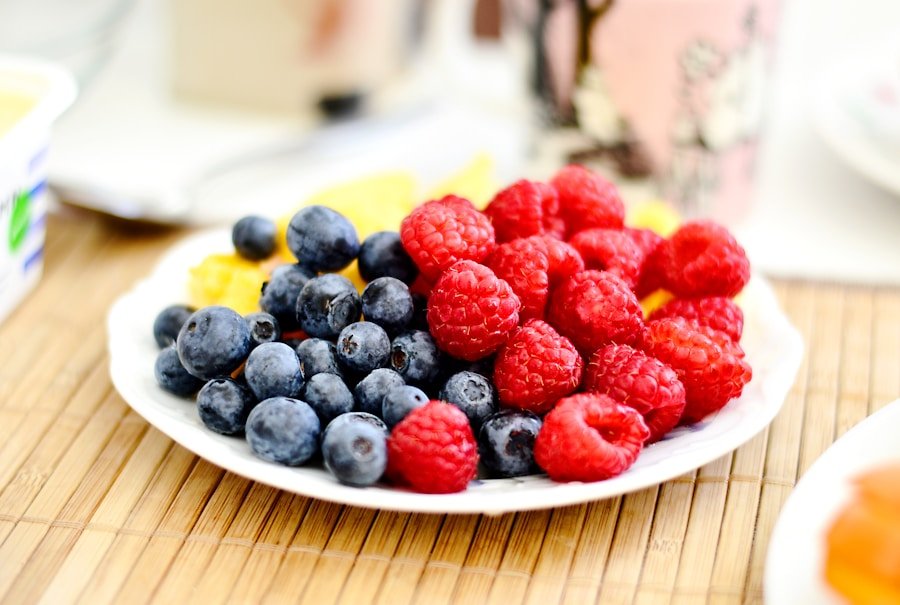In the quest for a healthier lifestyle and effective weight management, the concept of “belly-busting foods” has gained significant traction. These foods are not merely about being low in calories; they are nutrient-dense options that can help individuals feel satiated while promoting fat loss, particularly around the abdominal area. The modern diet is often laden with processed foods high in sugars and unhealthy fats, which can lead to weight gain and various health issues.
In contrast, belly-busting foods are characterized by their ability to enhance metabolism, reduce cravings, and provide essential nutrients that support overall well-being. Understanding the role of specific foods in weight management is crucial. Certain foods can help regulate appetite, improve digestion, and even influence hormonal balance, all of which are vital for achieving a flatter stomach.
By incorporating a variety of these foods into daily meals, individuals can create a sustainable eating pattern that not only aids in weight loss but also promotes long-term health. This article will delve into various categories of belly-busting foods, exploring their benefits and how they can be seamlessly integrated into a balanced diet.
Key Takeaways
- Lean proteins like chicken, turkey, and fish can help burn fat and build muscle.
- Fiber-rich foods such as fruits, vegetables, and whole grains can keep you feeling full and aid in weight loss.
- Healthy fats from sources like avocados, nuts, and olive oil can contribute to a flatter stomach.
- Antioxidant-packed foods like berries, spinach, and kale can support weight loss and overall health.
- Spices and herbs like cayenne pepper and ginger can boost metabolism and aid in weight loss.
Lean Proteins for Fat-Burning
Boosting Metabolism
Protein has a high thermic effect, meaning that the body expends more energy digesting it compared to fats or carbohydrates. This increased energy expenditure can contribute to a higher overall calorie burn throughout the day. For instance, consuming grilled chicken or baked salmon not only provides essential amino acids for muscle repair but also helps in maintaining a healthy metabolic rate.
Satiety and Appetite Management
When included in meals, lean proteins can help individuals feel fuller for longer periods, reducing the likelihood of unhealthy snacking between meals. For example, a salad topped with grilled shrimp or a quinoa bowl with black beans can be both satisfying and nutritious. The inclusion of lean proteins in meals can also help stabilize blood sugar levels, preventing the spikes and crashes that often lead to cravings for sugary snacks.
Effective Weight Loss
By prioritizing lean protein sources, individuals can effectively manage their appetite while supporting their weight loss goals.
Fiber-Rich Foods to Keep You Feeling Full

Fiber-rich foods are another essential component of a belly-busting diet. Foods high in dietary fiber, such as fruits, vegetables, whole grains, and legumes, not only aid in digestion but also promote feelings of fullness. Fiber slows down the digestion process, which helps regulate appetite and prevents overeating.
Healthy Fats for a Flatter Stomach
| Healthy Fats | Benefits |
|---|---|
| Avocado | Rich in monounsaturated fats and fiber, which can help reduce belly fat |
| Fatty Fish (Salmon, Sardines) | High in omega-3 fatty acids, which can reduce inflammation and promote weight loss |
| Nuts (Almonds, Walnuts) | Contain healthy fats, protein, and fiber, which can aid in weight management |
| Extra Virgin Olive Oil | Rich in monounsaturated fats and antioxidants, which can reduce abdominal fat |
| Coconut Oil | Contains medium-chain triglycerides, which can boost metabolism and reduce belly fat |
Contrary to popular belief, not all fats are detrimental to health; in fact, healthy fats are crucial for a balanced diet and can aid in achieving a flatter stomach. Sources of healthy fats include avocados, nuts, seeds, olive oil, and fatty fish like salmon and mackerel. These fats provide essential fatty acids that the body cannot produce on its own and are vital for various bodily functions, including hormone production and nutrient absorption.
Incorporating healthy fats into meals can also enhance satiety. For example, adding slices of avocado to a salad or drizzling olive oil over roasted vegetables can make dishes more satisfying without adding excessive calories. Furthermore, healthy fats have been shown to help regulate blood sugar levels and reduce inflammation in the body, both of which are important factors in weight management.
A handful of almonds or walnuts as a snack can provide a quick source of energy while keeping hunger at bay. By embracing healthy fats in moderation, individuals can enjoy flavorful meals that support their weight loss efforts.
Antioxidant-Packed Foods for Weight Loss
Antioxidant-packed foods play a significant role in promoting overall health and supporting weight loss efforts. These foods are rich in compounds that combat oxidative stress and inflammation in the body, which can hinder weight loss progress. Berries such as blueberries, strawberries, and raspberries are excellent sources of antioxidants and are low in calories.
Incorporating these fruits into breakfast cereals or smoothies not only adds natural sweetness but also provides a wealth of nutrients. Other antioxidant-rich foods include dark leafy greens like kale and spinach, as well as colorful vegetables such as bell peppers and carrots. These foods not only contribute to overall health but also support metabolic processes that aid in fat burning.
For instance, a stir-fry made with colorful vegetables and lean protein can be both delicious and packed with antioxidants that promote weight loss. Additionally, green tea is renowned for its antioxidant properties and has been linked to increased fat oxidation during exercise. By prioritizing antioxidant-rich foods in the diet, individuals can enhance their weight loss journey while reaping numerous health benefits.
Spices and Herbs to Boost Metabolism

Spices with Thermogenic Properties
Certain spices, such as cayenne pepper, have thermogenic properties that can increase calorie expenditure after consumption. Cayenne pepper contains capsaicin, which has been linked to increased fat oxidation and improved metabolic rate. Adding a pinch of cayenne to soups or stews can provide a spicy kick while potentially aiding in weight loss.
Herbs for Blood Sugar Regulation
Cinnamon is another spice known for its ability to regulate blood sugar levels and improve insulin sensitivity. Sprinkling cinnamon on oatmeal or incorporating it into smoothies can enhance flavor while providing metabolic benefits.
Anti-Inflammatory Herbs for Overall Health
Other herbs like ginger and turmeric possess anti-inflammatory properties that can aid in weight management. A warm ginger tea or turmeric-infused dish can be both comforting and beneficial for those looking to shed pounds. By creatively using spices and herbs in cooking, individuals can elevate their meals while supporting their metabolism.
Low-Glycemic Index Foods for Stable Blood Sugar Levels
Low-glycemic index (GI) foods are essential for maintaining stable blood sugar levels and preventing insulin spikes that can lead to cravings and weight gain. Foods with a low GI release glucose slowly into the bloodstream, providing sustained energy without causing rapid fluctuations in blood sugar levels. Examples of low-GI foods include whole grains like barley and quinoa, legumes such as lentils and chickpeas, as well as most fruits and non-starchy vegetables.
Incorporating low-GI foods into meals can help individuals feel fuller for longer periods while reducing the likelihood of overeating.
Additionally, snacking on raw vegetables or whole fruits instead of processed snacks can help maintain energy levels throughout the day without causing blood sugar spikes.
By focusing on low-GI foods, individuals can create balanced meals that support weight loss while promoting overall health.
Incorporating Belly-Busting Foods into Your Diet
Incorporating belly-busting foods into one’s diet is not just about making temporary changes; it’s about creating sustainable habits that promote long-term health and well-being. By focusing on lean proteins, fiber-rich foods, healthy fats, antioxidant-packed options, spices that boost metabolism, and low-GI choices, individuals can craft meals that are both satisfying and conducive to weight loss. The key lies in variety; by mixing different food groups together creatively—such as combining quinoa with roasted vegetables drizzled with olive oil—individuals can enjoy diverse flavors while reaping the benefits of these nutrient-dense options.
Ultimately, the journey toward achieving a flatter stomach is multifaceted; it involves not only dietary changes but also lifestyle adjustments such as regular physical activity and adequate hydration. By embracing belly-busting foods as part of a holistic approach to health, individuals can foster an environment conducive to weight loss while enjoying delicious meals that nourish their bodies.
If you are looking to target belly fat, you may also be interested in learning about the weight loss drug Wegovy. According to a trial conducted by Novo Nordisk, Wegovy has been shown to reduce the risk of heart problems. This article from The New York Times discusses the potential benefits of this new weight loss drug in improving overall health. To read more about Wegovy and its impact on heart health, check out the article here.
FAQs
What are some foods that target belly fat?
Some foods that target belly fat include avocados, berries, fatty fish, green tea, whole grains, and nuts.
How do these foods help in reducing belly fat?
These foods help in reducing belly fat by promoting satiety, reducing inflammation, and boosting metabolism. They also contain nutrients and compounds that specifically target belly fat.
Are there any specific diets that focus on reducing belly fat?
Yes, there are specific diets such as the Mediterranean diet, the DASH diet, and the low-carb diet that have been shown to be effective in reducing belly fat.
Can these foods be part of a balanced diet?
Yes, these foods can be part of a balanced diet when consumed in moderation and in combination with other nutrient-dense foods.
Are there any side effects of consuming these foods in large quantities?
Consuming these foods in large quantities may lead to weight gain if not balanced with overall calorie intake. Some individuals may also experience digestive discomfort if they consume certain foods in excess.